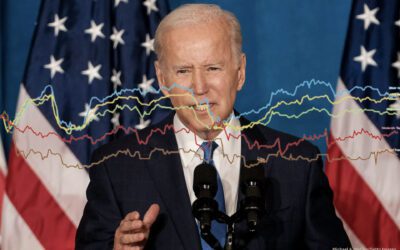President Obama won an Electoral College landslide and a 3 or 4-point national victory – against the great odds posed by prolonged high unemployment, lack of income gains, a barely perceptible recovery and political gridlock that kept his job approval at just 50 percent at best. He won because he was able to engage the diverse national coalition of Latinos, African Americans and Asians, young people and unmarried women who formed nearly half the electorate, despite the fact that these groups suffered the brunt of recession and have benefited least from the halting recovery.
He also succeeded because he waged class war and won. That was how he was able to define the choice, winning back voters who had been hammered by the economy and getting them mobilized again. That he waged class warfare successfully has critical consequences for what is the mandate in the weeks and months ahead.
This memo reports the results of the survey that Democracy Corps conducted for Campaign for America’s Future on Election Night and the night after so voters were still clear about what was in their head at the time of the election.[1] We will also incorporate results conducted for Women’s Voices. Women Vote Action Fund, Economy Media Project, and Human Rights Campaign.
The President came back in the race when he centered the choice on the future facing the middle class and equally important, defined Mitt Romney as an out-of-touch rich guy who does not care about the “47 percent,” shipped jobs overseas as CEO of Bain Capital, wanted to cut taxes for the rich and wanted to ‘reform’ and change Medicare in major ways. Understand that most voters voted to keep Obama in office, despite the fact that majorities thought the country was on the wrong track and wanted change. They have intensely negative feelings about ‘Wall Street’ and ‘the richest 1 percent.’
Romney got voters’ attention, as this survey shows. By 11 points, they thought he might have a better chance of breaking the gridlock (47 to 36 percent) where Obama was perceived to have failed. And by 5 points, voters thought he had better ideas on creating jobs. Only 44 percent said Obama was better than Romney on jobs – a critical gap in an election where economy and jobs were the number one issue and number one priority for the future.
The starting point for this election is the near double-digit advantage Obama established on ‘restoring the middle class’ (51 to 42 percent) – the choice the two candidates battled to win right to the end. The advantage was triple Obama’s advantage in the vote and tracked his vote at 51 percent.
The advantage on the core election choice was reflected in a collection of partisan and ideological factors that put Obama at an 8-point personal advantage over Romney (comparing net favorability), the Democratic Party at a 7-point advantage over the Republican Party, and the Democrats in Congress, a 7-point net advantage over the Republican Congress. Voters most disliked Wall Street and the richest 1 percent, and the Tea Party movement. They felt most warm about Planned Parenthood and Medicare. That contributed directly to the Democrats’ 6-point advantage in party identification.
Bottom line, the voters gave a very clear mandate to the president: address the economy and growth, and protect middle class social insurance. Addressing deficits was important, but further down the priority list. By two-to-one, voters say the top priority should be growing the economy rather than a plan to reduce our deficits. Voters are not looking for Simpson-Bowles, but nearly the opposite – tax increases on top earners and protection of Medicare and Social Security. The political class should pay attention, lest they see a TARP-like reaction to what is deemed to be bold change at a critical turning point, with negotiations now beginning in the fiscal showdown.
Yes, class warfare won.
The President framed this election as a “make or break” moment for the middle class. That was the starting point in his battle for re-election: in effect, waging class war, standing with the middle class, insisting that everybody pay their fair share and get a fair shake, while advocating higher taxes on the wealthiest as a central plank in his platform.
With the country upset with Wall Street and the top 1 percent, Obama defined Romney as out of touch, an outsourcer, and a champion of trickle down who wanted to protect tax cuts for the rich. When Obama and swing voters were asked their three biggest doubts about Romney, being for the rich and out of touch with average people encompass half of the total responses.


The volatile voters that Obama consolidated to produce his majority of 51 percent were more populist than those Obama voters who never wavered. They were more likely to mention the 47 percent video and much more likely to site outsourcing at Bain and return to trickle-down economics. Obama’s majority was produced by those class attacks on Romney.
The Rising American Electorate of unmarried women, minority, and young voters that gave Obama almost as big a percentage as in 2008 were also moved above all by this class characterization of Romney – 63 percent of their total reasons given for voting against Romney.
Ultimately, Obama won by 9 points on which candidate would restore the middle class – the summary of the class battleground in this election.
With the election centered on the future of the middle class and Obama’s vote shaped by it, the country’s real policy agenda for the future looks very different than the elites’. We read voters this statement: “Both Barack Obama and Mitt Romney said in their campaigns that this election is about the future of the middle class. That was the big choice. Now, that the election is over, which THREE of the following are the most important things for us to focus on? Across the whole electorate, 50 percent said create jobs and get the economy moving – well ahead of deficit reduction, protecting middle class retirement benefits, and investing in education. But note that the deficit number was produced almost entirely by the Romney voters. Among the certain and swing Obama voters, addressing the deficit ranked 3rd and 4th behind other priorities – particularly “protecting middle class retirement benefits, including Medicare, Medicaid and Social Security.”

It should not be surprising that voters in this election now prioritize growth over deficit reduction and believe pretty simply that Medicare and Social Security should not be part of any big bi-partisan deficit reduction package.

In a post-election survey for The Economy Media Project, we contrasted two alternatives – one to expand employment and other to protect social insurance – against the conservative and elite priority, presented below –
‘Given where our economy is, we should cut government spending and reduce the federal deficit that weighs down our economy and give confidence to businesses to invest and create jobs.’
When given the alternative to invest now in infrastructure, education and technology, and rehiring teachers and firefighters, they opted for growth over deficit reduction by 9 points (52 to 43 percent). When given the alternative of helping the middle class by protecting Medicare and Social Security, they opt for protecting retirement programs over deficit reduction by 9 points (50 to 41 percent).
It could not be clearer: this election produced a citizenry educated on how they want to address the economy and the future of the middle class.
Since both Democrats and Republicans attacked the other side for cutting Medicare spending and endangering the program, it would be an unpleasant surprise to voters if Medicare were the first casualty of deficit reduction. Elite opinion risks another TARP – where voters came to feel the elites of both parties took the wrong lesson from the election and economic crisis.
The Grand Bargain
With Congress beginning to consider a grand bargain on long-term deficit reduction to avoid the so-called “fiscal cliff,” our survey found that voters have clear and strong priorities – and these contrast starkly with the terms discussed in the President’s negotiations with House Speaker Boehner in the summer of 2011 and with the recommendations of the co-chairs of the President’s deficit commission, Alan Simpson and Erskine Bowles.
We asked voters what they would find acceptable and unacceptable in a $4 trillion deficit reduction deal. They overwhelmingly – and across the political spectrum – want Medicare and Social Security protected. They found unacceptable cuts in domestic programs that failed to protect programs for infants, poor children, schools and college aid. More than two-thirds would find an agreement unacceptable if it did not raise taxes on the rich, or if it lowered top rates on the rich and the corporations.

This is not because they oppose all measures to close the deficit. They favor raising taxes on the rich. Three in four found acceptable a plan that would create “a higher tax rate on those earning over one million dollars a year” (including a majority of Republicans). Seventy percent agreed with the president’s call to raise taxes on the top 2 percent, while keeping them low for the middle and working class. More than two-thirds found acceptable shutting down corporate tax havens abroad by imposing a minimum tax on overseas profits (including 71 percent of Republicans).
Voters want cuts in waste and subsidies to special interests. For example, 89 percent found acceptable savings from negotiating lower drug prices from drug companies. Nearly two-thirds (65 percent) favored cuts in subsidies to oil companies, agribusiness and multinational corporations. Nearly three-fourths favored cutting military spending by ending the war in Afghanistan (including 60 percent of conservatives).
While voters think deficit reduction is a serious priority – although below that of creating jobs and growth – they do not believe that Social Security and Medicare need to be cut to address it. We gave voters a choice between two statements – one acknowledging the federal deficit as a big problem, but arguing against major spending cuts in Social Security and Medicare and the other arguing deficits are such a national crisis that broad spending cuts must include “possible future cuts” to Social Security and Medicare. Even with this cautious statement, 60 percent preferred the “no cut” position (47 percent strongly) to 33 percent who accepted the potential of future cuts.
Just as voters will be unpleasantly surprised if a deficit deal costs jobs and slows the economy, they are likely to object to legislators who vote for a deal that includes cuts in Medicare and Social Security, while failing to raise tax rates on the rich and the corporations, or to take on wasteful corporate subsidies.
Defeating austerity
The debate over Simpson-Bowles or any big bi-partisan budget deal up until now has taken for granted that the first priority for the country is reducing its long-term deficits. But that was before austerity drove much of Europe into recession and before we had an election on the topic. This is a serious debate where progressives have been making gains, despite the elite consensus on the need for restraining spending and deficits.
Here is where we stand:
· On the simple choice between a plan to grow the economy and a plan to reduce the deficit, growth wins 62 to 30 percent among those who voted last week.
· Voters split evenly on whether the short-term pain is worth it – even when conservatives argue that the short-term spending endangers our future.
· Growth wins the argument in a big way when joined with a commitment to reduce wasteful spending and eliminate special interest loopholes and subsidies. This is a critical part of the progressive argument.
· Growth plans gain support and win a decisive majority when they are more populist: A new plan must start by closing corporate loopholes and raising taxes on those at the top – even as it affirms that any deficit plan must not entertain Medicare or Social Security cuts.
And the Economic Media Project’s research shows increasing support for a liberal economic position that warns against drastic spending cuts and supports serious investments:
We should avoid immediate drastic cuts in spending, and instead, we need serious investments that create jobs and make us more prosperous in the long term that will reduce our debt, too.
We know that voters are skeptical about short-term stimulus spending that is not grounded in long-term investments for the country that will make us more prosperous with less debt. But “serious investments” that “make us more prosperous in the long-term” wins the public argument by 51 to 42 percent – and those margins have been growing going into this period of debate about the economy and debt.
Those elected last week are in a position to argue for investment-led growth to enrich us long-term, confident that that policy will supersede calls to focus on lower long-term deficits. We need not give into the hysteria over deficits and fiscal cliff.
The jobs agenda
The president won re-election by making the choice about the middle class and defining Romney as for the rich and out of touch.
But on the main issue in voters’ minds – the economy and creating jobs – Obama did not gain an edge over Romney. Many of Obama’s unwavering voters supported him because of his handling of the crisis and wanting to continue the progress, as well as his rescue of the auto industry. A nearly equal number supported him because of his plans on the economy and to raise taxes on the wealthy. In any case, the economic reasons for supporting Obama form just one-third of the total responses – and they are divided between past and future judgments.
Romney’s positive offer was more focused – split evenly between his jobs plans and business experience on the one hand and his intention to cut government spending, repeal Obamacare, and reduce the deficit. For the certain Romney voters, his job plans topped the reasons to vote for him.
The result is that on Election Day, Romney enjoyed a 2-point advantage on the economy and was up 5 points on creating jobs: just 44 percent chose Obama on jobs – 7 points below his vote. While voters are looking for action on the economy and jobs, Obama did not highlight what he intended to do differently on the economy. His argument for allowing his policy more time appealed largely to his most loyal supporters.
We know the voters in this Election night survey responded very warmly to a plan to invest in new industries and rebuild the country and create jobs over the next five years: over two-thirds were very favorable to this idea – and this result is 8 points higher than a long-term plan for addressing the deficit.

We know that Obama got 39 percent of the white vote and over one-third (36 percent) of white non-college voters. Those voters had even more doubts about Romney being for the rich and out-of-touch – and perhaps more would have moved to Obama had there been a bigger offer on jobs and long-term economic plans.
Voters are still looking for action on the economy and jobs, and there is good reason to believe they are open to serious investments that put America on a track that rescues the middle class.
[1] This memo is mostly based on a national post-election survey of 1,000 2012 presidential voters, conducted November 6-7, 2012 by Greenberg Quinlan Rosner for Democracy Corps and Campaign for America’s Future. Unless otherwise noted, margin of error= +/- 3.1. Survey results were weighted to reflect the National Exit Survey. The memo is also based on a data from a combined set of surveys partnering with several other progressive groups, including Women’s Voices. Women Vote Action Fund, Economy Media Project and Human Rights Campaign.




